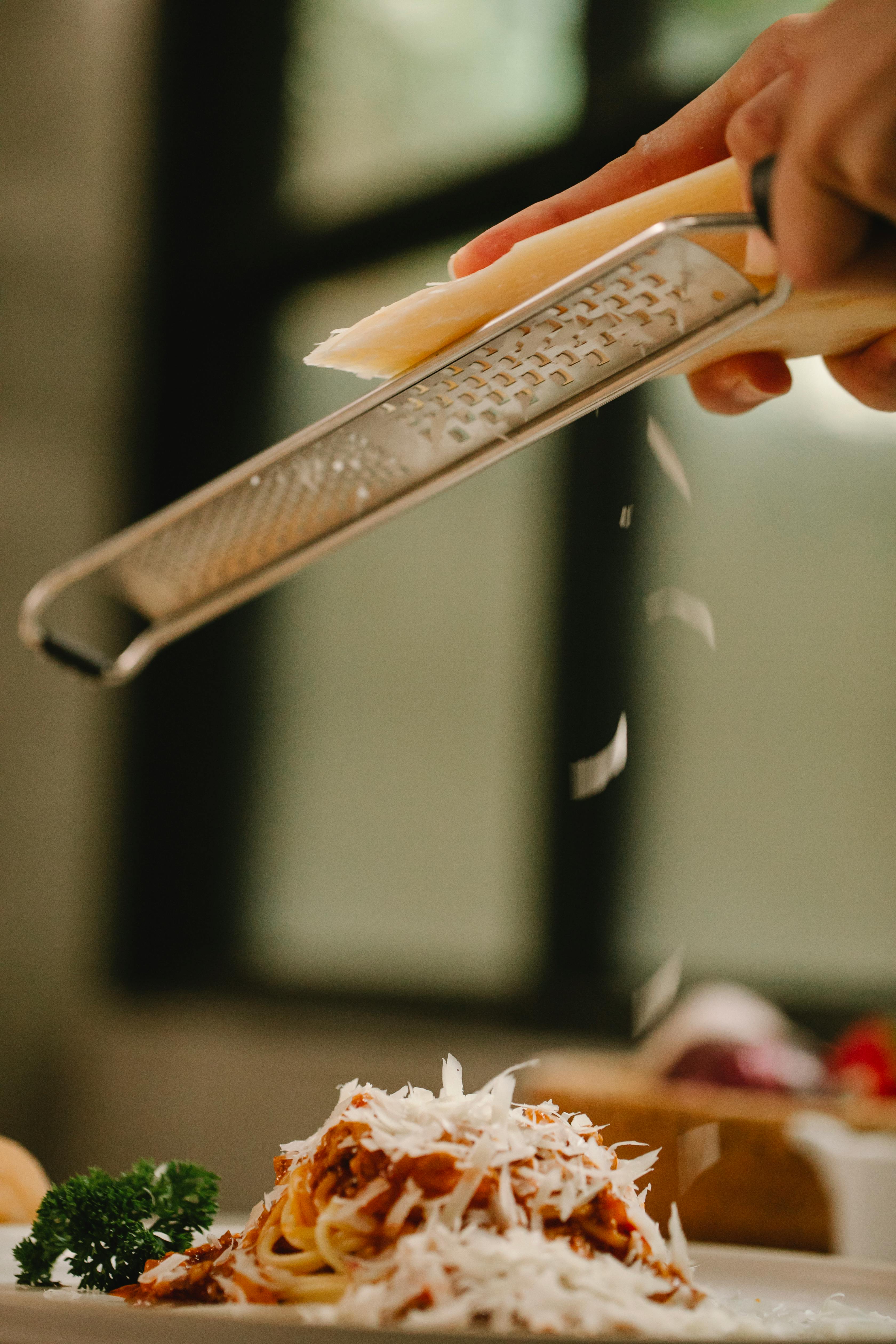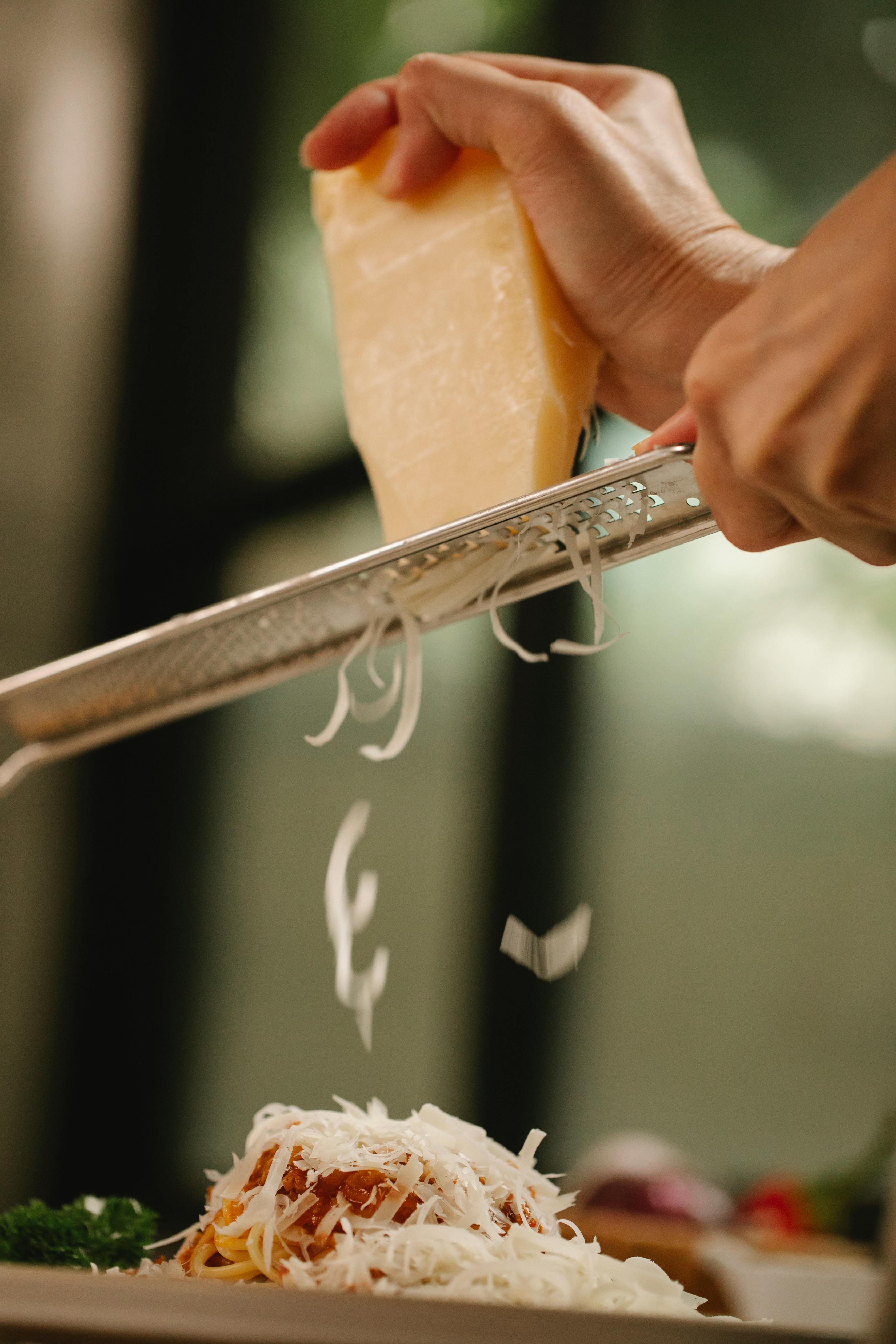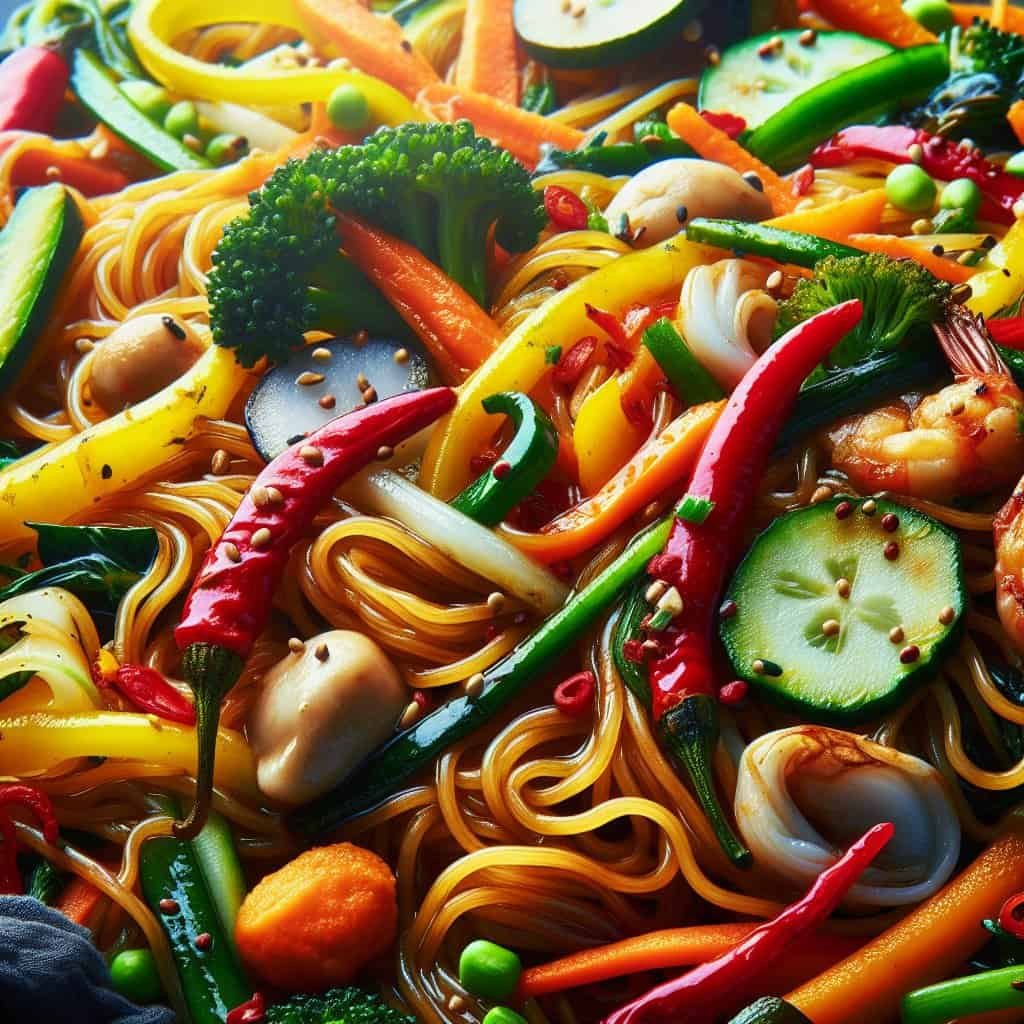Korean cuisine is renowned for its wide variety of delicious and flavorsome dishes, and one aspect that truly shines is their diverse range of noodles. From the comforting warmth of the classic Japchae to the fiery kick of the spicy Bibim Guksu, Korean noodles offer an array of mouthwatering flavors and textures that are sure to satisfy any palate. But with such an abundance of options, how do you navigate the world of Korean noodles and truly appreciate their unique qualities? In this article, we will guide you on a culinary journey, providing tips and insights on how to properly enjoy and appreciate the wonders of Korean noodle dishes. So get ready to explore the captivating world of Korean noodles and embark on a delicious adventure! Well, you’ve come to the right place to learn all about it! In this comprehensive article, we will be exploring the variety of Korean noodles, from traditional to modern dishes, regional influences, serving and eating tips, health benefits, cooking techniques, restaurant recommendations, noodle culture, and even the future of Korean noodles. So hold on to your chopsticks and let’s dive into the delicious world of Korean noodles!

Introduction to Korean Noodles
Korean cuisine is known for its diverse and flavorful dishes, and noodles play a significant role in this culinary tradition. Noodles have been a staple food in Korea for centuries, with each region boasting its unique noodle dishes. From the soft and chewy texture of traditional noodles to the spicy and bold flavors of modern variations, Korean noodles are sure to satisfy any palate.
Traditional vs Modern Korean Noodles
Before we delve into the specific types of Korean noodles, it’s essential to understand the difference between traditional and modern Korean noodles. Traditional Korean noodles often showcase simplicity, with a focus on the quality and freshness of the ingredients. On the other hand, modern Korean noodles have evolved to cater to contemporary tastes, incorporating new flavors, ingredients, and cooking techniques. Both styles have their charm and offer a delightful culinary experience.

Popular Types of Korean Noodles
Korean cuisine boasts an extensive repertoire of noodle dishes, each with its distinct characteristics and flavors. Let’s explore some popular types of Korean noodles, both traditional and modern, to give you an overview of the variety you can expect to find.
Japchae
Japchae is a classic Korean noodle dish made with sweet potato starch noodles, stir-fried with an assortment of vegetables and often accompanied by meat or seafood. The resulting dish is a colorful and flavorful combination of vibrant vegetables and tender noodles.
Naengmyeon
Naengmyeon, or cold noodles, is a refreshing dish commonly enjoyed during the hot summer months. The noodles are made from buckwheat or sweet potato starch and served chilled with a tangy and savory broth. Toppings like cucumber, half-frozen slices of beef, and a hard-boiled egg elevate the dish’s taste and presentation.
Kalguksu
Kalguksu, translated as “knife-cut noodles,” is a beloved comfort food in Korea. The handmade noodles are thick and flat, boiled to perfection, and served in a hot, flavorful broth. Often, kalguksu is enjoyed with kimchi or other traditional side dishes for a satisfying and heartwarming meal.
Kongguksu
Kongguksu is a delightful soy milk noodle dish that originated from Buddhist traditions. The noodles are made from wheat and served in a chilled soy milk-based broth, which is subtly flavored with sesame and other seasonings. This light and creamy dish is perfect for those seeking a refreshing and unique noodle experience.
Modern Korean Noodles
While traditional Korean noodles hold a special place in Korean cuisine, modern variations have gained popularity over the years. Let’s explore some contemporary Korean noodle dishes that have captured the hearts (and taste buds) of food enthusiasts worldwide.
Ramyun
Ramyun, a Korean take on instant noodles, has become a global sensation. These noodles come in various flavors and are known for their spiciness, with the inclusion of chili powder and other seasonings. Ramyun is often enjoyed with added toppings like vegetables, meat, and eggs, making it a hearty and quick meal option.
Jajangmyeon
Jajangmyeon is a Korean-Chinese dish that has gained immense popularity in Korea. It features hand-pulled wheat noodles covered in a rich and savory black bean sauce, often accompanied by diced pork and vegetables. This comforting dish is enjoyed by both Koreans and foreigners alike.
Bibim Guksu
Bibim Guksu, meaning “mixed noodles,” is a refreshing and vibrant dish that combines thin wheat noodles with a fiery chili sauce. Along with the sauce, various vegetables, sesame oil, and sesame seeds are added to create a harmonious balance of flavors. Bibim Guksu is often garnished with a boiled egg and served chilled, making it a perfect choice for a hot summer day.
Janchi Guksu
Janchi Guksu, also known as “banquet noodles,” is a traditional Korean noodle dish served on special occasions and celebrations. The noodles are typically made from wheat and are served in a clear, flavorful broth. It is often garnished with slices of beef, black mushrooms, and other ingredients, creating a satisfying and festive meal.

Regional Influences on Korean Noodles
Korean cuisine is known for its regional diversity, with each province showcasing its unique culinary traditions. The same can be said for Korean noodles, as different regions have their signature noodle dishes. Let’s take a closer look at the regional influences on Korean noodles.
North Korean Noodles
The cuisine in North Korea has its distinct style, and noodles are no exception. North Korean noodles often focus on simplicity, using fewer toppings and spices compared to their southern counterparts. Noodle dishes like Pyongyang Naengmyeon (cold buckwheat noodles) and Pyongyang Sujebi (hand-torn wheat flour noodles) are famous for their delicate flavors and unique textures.
Jeolla Province Noodles
Jeolla Province, located in the southwestern part of Korea, is known for its vibrant culinary scene. The region boasts a variety of noodle dishes, including Jeonju Bibimbap (rice mixed with vegetables and meat) and Jeonju Kalguksu (handmade knife-cut noodles). Jeolla Province noodles are often hearty and flavorful, featuring rich broths and generous toppings.
Gyeongsang Province Noodles
In contrast to Jeolla Province, Gyeongsang Province in the southeastern part of Korea offers a different noodle experience. Noodle dishes like Gyeongyang Somyeon (thin wheat noodles) and Jinju Bibim Guksu (spicy mixed noodles) are known for their bold and spicy flavors. Gyeongsang Province noodles often incorporate chili powder, garlic, and other robust seasonings.
Jeju Island Noodles
Jeju Island, a popular tourist destination, has its unique noodle specialties. Noodle dishes like Jeju Mulyeot Guksu (wheat noodles with sweet soy sauce) and Haemul Jjamppong (spicy seafood noodle soup) showcase the island’s fresh seafood and authentic flavors. Jeju Island noodles are often light, refreshing, and emphasize the island’s natural ingredients.
Serving and Eating Korean Noodles
Korean noodles are not just about the flavors; the way they are served and enjoyed also adds to the overall dining experience. Let’s dive into the serving and eating etiquette of Korean noodles.
Condiments and Garnishes
When enjoying Korean noodles, condiments and garnishes play a crucial role in enhancing the flavors. Common condiments include gochujang (Korean chili paste), soy sauce, sesame oil, and vinegar. Pickled radish, kimchi, and sliced green onions are often used as garnishes, providing additional textures and tastes to the dish.
Proper Utensils and Table Manners
When it comes to eating Korean noodles, chopsticks and a soup spoon are the primary utensils used. It is customary to hold the chopsticks in your right hand and use them to pick up the noodles and accompanying ingredients. Proper table manners include not slurping loudly, chewing with your mouth closed, and showing appreciation for the meal by saying “jal meokkesseumnida” (meaning “I enjoyed the meal”).
Pairing Korean Noodles with Drinks
Pairing Korean noodles with suitable beverages can complement the flavors and create a harmonious dining experience. For traditional Korean noodle dishes, a warm cup of green tea or makgeolli (traditional rice wine) can be enjoyed. On the other hand, modern Korean noodle dishes like Jajangmyeon pair well with refreshing beverages like soda or iced tea.
Enjoying Noodles in Korean Culture
In Korean culture, noodles hold a significant symbolic meaning and are often associated with longevity and good fortune. It is customary to eat a bowl of traditional Korean noodles on birthdays and New Year’s Day to bring good luck and longevity. So, when enjoying Korean noodles, it’s not just about the delicious flavors, but also about embracing the cultural traditions and auspicious meanings behind them.
Health Benefits of Korean Noodles
While Korean noodles are undeniably delicious, they also come with several health benefits. Let’s explore the nutritional value of Korean noodles, the benefits of key ingredients, and dietary considerations to keep in mind.
Nutritional Value of Korean Noodles
Korean noodles are a good source of carbohydrates, providing energy for your daily activities. Depending on the type of noodle, they can also be a source of dietary fiber and certain essential vitamins and minerals. However, it’s important to note that the nutritional value may vary depending on the specific noodle dish and its ingredients.
Ingredients and Their Benefits
Many Korean noodle dishes incorporate fresh vegetables, lean proteins, and nutrient-rich ingredients. For example, Japchae includes various vegetables like spinach and mushrooms, providing essential vitamins and minerals. Naengmyeon often includes cucumbers and radishes, which are hydrating and rich in antioxidants. These ingredients not only add flavor and texture to the dish but also contribute to its overall nutritional value.
Dietary Considerations
For those with dietary restrictions, Korean cuisine offers options for different needs. Many Korean noodles can be made gluten-free by using alternative grains like buckwheat or sweet potato starch. Additionally, vegetarian or vegan options are widely available, with tofu or vegetable-based broths and protein substitutes. It’s essential to communicate any dietary restrictions or preferences to ensure an enjoyable and suitable meal.
Cooking Korean Noodles at Home
If you’re feeling inspired to try your hand at cooking Korean noodles, we’ve got you covered! Let’s explore the essential ingredients, preparing noodle broths and sauces, cooking techniques, and options for vegan and gluten-free Korean noodle dishes.
Essential Ingredients for Korean Noodle Dishes
The key to making delicious Korean noodle dishes at home lies in having the right ingredients. Some common staples include Korean noodles (based on the dish you’re making), various vegetables, proteins like beef, pork, or seafood, soy sauce, sesame oil, and seasonings like garlic and ginger. Having these ingredients on hand will help you create authentic and flavorful dishes.
Preparing Noodle Broth and Sauces
The broth and sauces used in Korean noodle dishes are crucial for achieving the right flavors. Depending on the dish, broths can be made from aromatic vegetables, vegetable or meat stock, or soy milk. Sauces often consist of a combination of gochujang, soy sauce, sesame oil, and other seasonings. Taking the time to make your own broth and sauces will elevate the taste of your noodle dishes.
Cooking Techniques for Korean Noodles
While cooking Korean noodles may seem intimidating, it’s actually quite manageable with a few essential cooking techniques. Boiling noodles to the right texture, stir-frying vegetables and proteins, and simmering broths to develop flavors are some common techniques used. Each dish may require specific cooking methods, so be sure to follow the recipes and instructions accordingly.
Vegan and Gluten-Free Korean Noodle Options
For those following a vegan or gluten-free diet, there are plenty of options to explore in Korean cuisine. As mentioned earlier, many Korean noodles can be made gluten-free by using alternative grains like buckwheat or sweet potato starch. In terms of vegan options, dishes like Japchae can easily be made without meat and seafood while still maintaining its delicious flavors. Experimenting with different ingredients and substitutions will help you create vegan and gluten-free Korean noodle dishes that suit your dietary needs.
Exploring Korean Noodle Restaurants
If you prefer to leave the cooking to the experts, exploring Korean noodle restaurants is the way to go. Whether you’re visiting Korea or your local neighborhood, there are many places to indulge in authentic Korean noodle dishes. Let’s take a look at iconic noodle restaurants in Korea, hidden gems, international Korean noodle restaurants, and noodle festivals and events worth checking out.
Iconic Noodle Restaurants in Korea
When in Korea, there are a few iconic noodle restaurants that you must visit to truly experience the essence of Korean noodles. From historic establishments that have been serving noodles for generations to modern eateries that push the boundaries of noodle innovation, these restaurants offer a glimpse into the rich culinary tradition of Korea.
Hidden Gems for Korean Noodles
While popular noodle restaurants in Korea may attract crowds, there are also hidden gems waiting to be discovered. These lesser-known establishments may not have the fame and recognition, but they are champions in their own right, offering unique flavors and culinary experiences. Exploring these hidden gems is a fantastic way to discover the lesser-known side of Korean noodles.
International Korean Noodle Restaurants
Thanks to the globalization of Korean cuisine, Korean noodle restaurants can now be found in many countries around the world. From mom-and-pop shops to trendy contemporary eateries, international Korean noodle restaurants are spreading the love for Korean noodles across borders. If you find yourself outside of Korea, be sure to check out these restaurants for a taste of authentic Korean flavors.
Noodle Festivals and Events
For noodle enthusiasts looking to immerse themselves in the world of Korean noodles, attending noodle festivals and events is a must. These festivals often feature a variety of noodle dishes from different regions of Korea, along with cooking demonstrations, cultural performances, and noodle-eating competitions. Participating in such events allows you to celebrate and appreciate the rich heritage and diversity of Korean noodles.
Noodle Culture: Etiquette and Traditions
Noodles hold a special place in Korean culture, not just as a staple food but also in terms of etiquette and traditions. Let’s explore some unique aspects of noodle culture in Korea.
Noodle Slurping in Korean Culture
Contrary to some Western dining etiquette, slurping noodles in Korean culture is not only acceptable but often seen as a sign of enjoying the meal. Slurping is believed to enhance the flavors and aroma of the noodles while showing appreciation for the dish’s deliciousness. So, don’t be shy to slurp your noodles in Korea!
Sharing Noodle Dishes
In Korean culture, sharing is an essential aspect of dining, and noodle dishes are no exception. It is common to order a large noodle dish and share it with a group of friends or family. This act of sharing fosters a sense of togetherness and creates a joyful dining experience.
Celebratory Noodle Traditions
Korean noodles are often associated with celebrations and special occasions. As mentioned earlier, eating a bowl of noodles on birthdays or New Year’s Day is believed to bring good luck and longevity. Additionally, noodle dishes like Janchi Guksu are served at weddings and other celebratory events, symbolizing good wishes for the future.
Symbolic Meanings of Noodles
In Korean culture, noodles hold various symbolic meanings. The long and unbroken strands of noodles are believed to represent a long and prosperous life. The act of slurping noodles also symbolizes the sound of sucking in good fortune and success. These symbolic meanings add depth and significance to the act of enjoying Korean noodles.
The Future of Korean Noodles
As with any cuisine, Korean noodles continue to evolve and adapt to changing times and tastes. Let’s explore the future of Korean noodles in terms of innovations in the noodle industry, global influences, and the preservation of traditional Korean noodle recipes.
Innovations in Korean Noodle Industry
With advancements in technology and changing consumer preferences, the Korean noodle industry is constantly innovating to meet the demands of the market. From new flavors and packaging options for instant noodles to the introduction of healthier alternatives, the industry is evolving to cater to a wider audience and provide a more diverse noodle experience.
Global Influence on Korean Noodles
The rising popularity of Korean cuisine globally has also influenced the world of Korean noodles. Korean restaurants and noodle dishes are gaining recognition in different parts of the world, leading to increased international interest and experimentation with Korean flavors and cooking techniques. This global influence not only expands the reach of Korean noodles but also contributes to the diversity of the overall noodle landscape.
Preserving Traditional Korean Noodle Recipes
While innovation is crucial, it is equally important to preserve and honor traditional Korean noodle recipes. Efforts are being made to document and safeguard age-old recipes, ensuring that future generations can continue to enjoy the authentic flavors of Korean noodles. By preserving these traditional recipes, Korean culture and culinary heritage are kept alive.
In conclusion, exploring the variety of Korean noodles offers a delightful journey through the flavors, textures, and traditions of Korean cuisine. From traditional favorites like Japchae and Naengmyeon to modern creations like Ramyun and Jajangmyeon, there is something for every noodle lover to enjoy. Whether you’re indulging in a bowl of noodles at a traditional Korean restaurant or attempting to recreate the dishes at home, the diverse world of Korean noodles is yours to savor and appreciate. So go ahead, grab your chopsticks, and embark on a culinary adventure that will leave you craving more of these delectable Korean noodle dishes!
